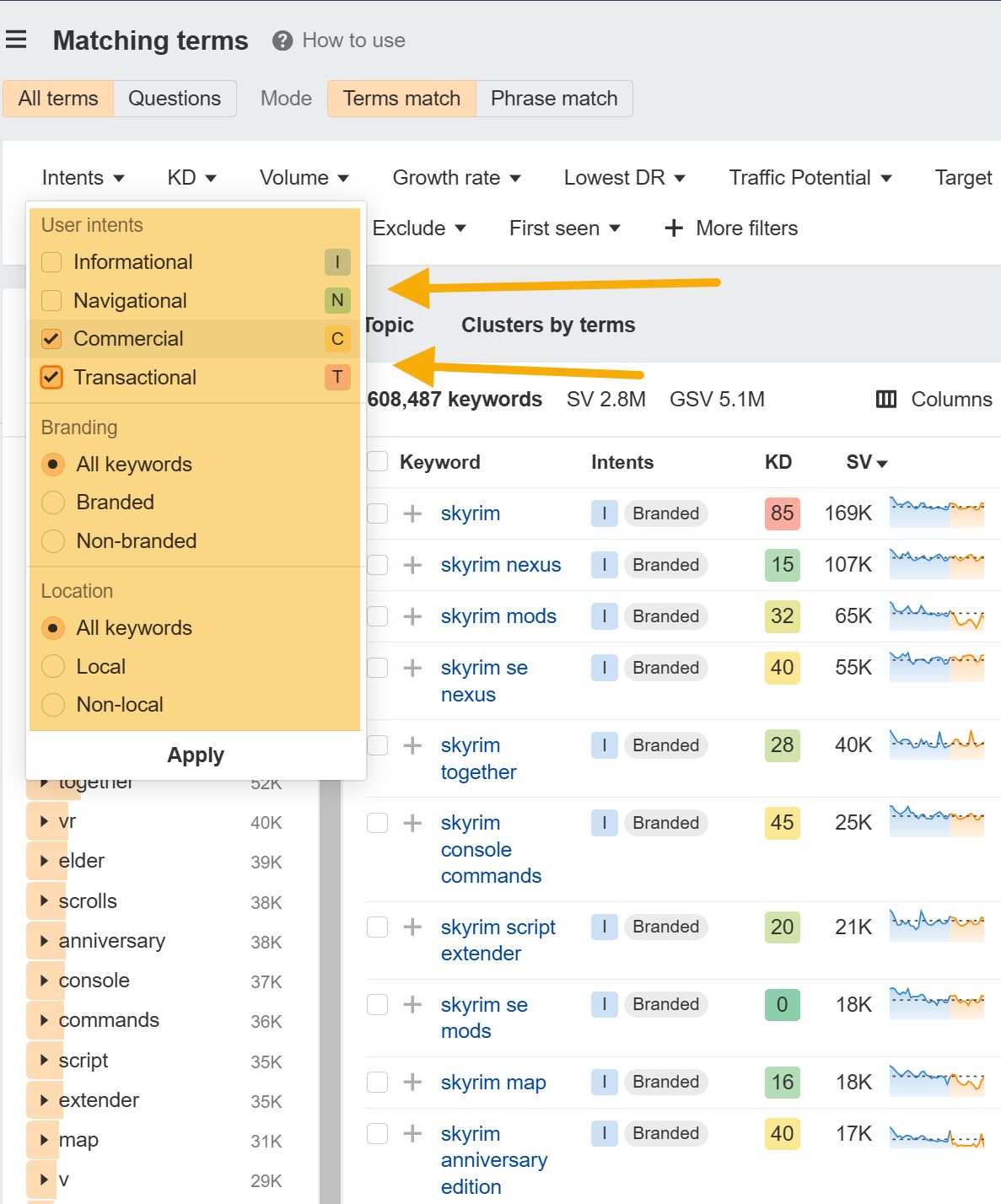Qualifying Your Niche
Before you invest time and energy into a niche, you’ll need to look at its competitiveness, as well as the breadth of search interest and, of course, profitability.
These are the factors you’ll need to assess when qualifying your niche.
Step 1: Identify Search Trends
The first thing you should do when qualifying a niche is to identify whether or not there is consistent interest in the niche. You can identify this by looking at the search interest over the period of a year or more.
Search trends that experience frequent fluctuations suggest that a niche isn’t consistently popular. Therefore, you might not generate a stable and reliable income from it.
Here’s how to identify search trends.
Google Trends
Google Trends is a free tool that allows you to analyze the search trends for keywords.
Here’s an example.
In the search bar, enter your topic and hit “Explore”. We’re going to use “running shoes”.

Next, click on “Past day” and change it to “Past 12 months”. The most effective way to gauge search trends is by analyzing data over a year or even two.

This will give you a much better idea of how popular the niche is:

As you can see, the interest in “running shoes” fluctuates throughout the year. However, by analyzing the timeline at the bottom of the graph, you’ll notice a consistent level of interest in this topic throughout the year.
Another place to look for search trends is by looking into the fastest growing subreddits or even looking at what’s trending on TikTok.
Step 2: Identify and Assess Competitors
The next step in qualifying a niche is to identify and assess the competition. These are sites already ranking for the keywords and topics you aim to target. By understanding what types of sites they are, you can determine whether or not you will be able to compete in the niche.
Let’s take a look at the most important steps for identifying and assessing competitors in your niche. If you want a more comprehensive guide on SEO Competitor Analysis, then check out our guide which we’ve linked to.
First things first, you want to search for your keyword and have a look at the search engine results page (SERP).
Next you’ll want to check out the site’s that are ranking. Then you’ll want to have a look at the Authority Score (AS) of each site (to determine if they’re authority sites or not).
Before we go any further, let’s differentiate between authority sites and non-authority affiliate sites:
- Authority site: A site with an AS of 40+. Authority sites cover broad niches like “running” and contain content that deals with all aspects of the niche (not just affiliate content).
- Non-authority affiliate site: A site with an AS of less than 40. These are websites that don’t possess the same level of trust and credibility as authority sites. These sites often have fewer backlinks and may not be well-recognized within their niche.
With that being said, let’s jump into the competitor analysis.
Assess Your Competitors’ Authority Scores
To check a site’s AS, you can use Semrush’s Bulk Backlink Analysis tool. All you need to do is paste the URLs of the sites that are ranking for your primary keyword and click “Compare”.
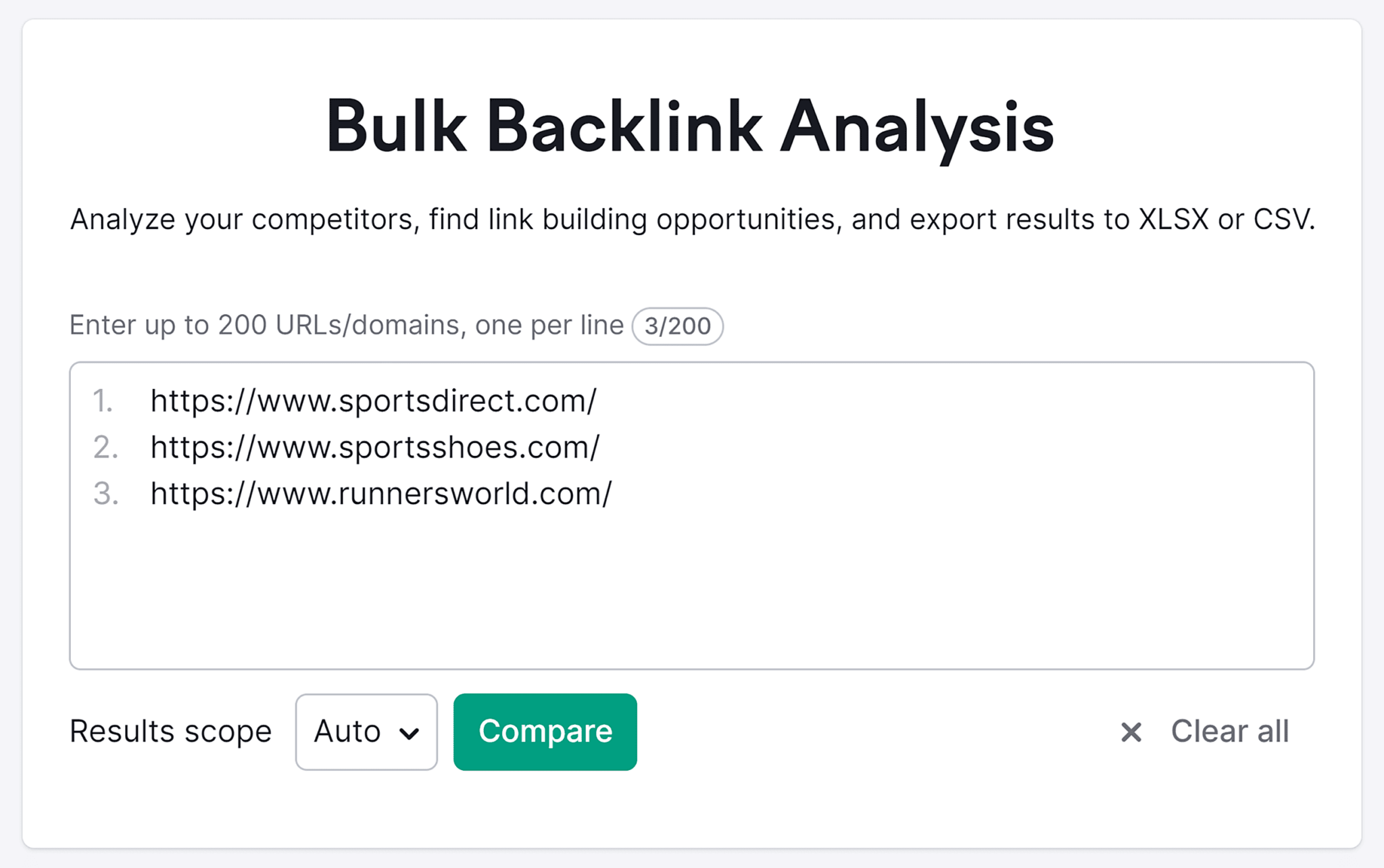
Then, you’ll be able to see the AS for each URL.

Identify Affiliate Sites
The next thing you need to check is if the top-ranking site is an affiliate site. If so, then that’s good news because it indicates that Google is choosing to rank affiliate sites for the keyword.
How do you identify affiliate sites? First, click through to the page.
Then check for the following:
- A clear disclaimer stating the site earns commission from product links in the articles
- Product review posts, often identifiable through keyword modifiers like:
- “Best”(Best 15 Airfryers of 2023)
- “Top” (Top Texas Tours)
- “vs” (Adidas vs Nike Running Shoes)
- “Roundup” (Best Laptop for Video Editing Roundup)
- “Reviews” (Pink Gaming Chairs Reviewed)
- Buttons with CTA’s like “Book Now” or “Buy on Amazon”
Here’s a real world example.
Runners World has a clear disclaimer indicating that it’s an affiliate site.
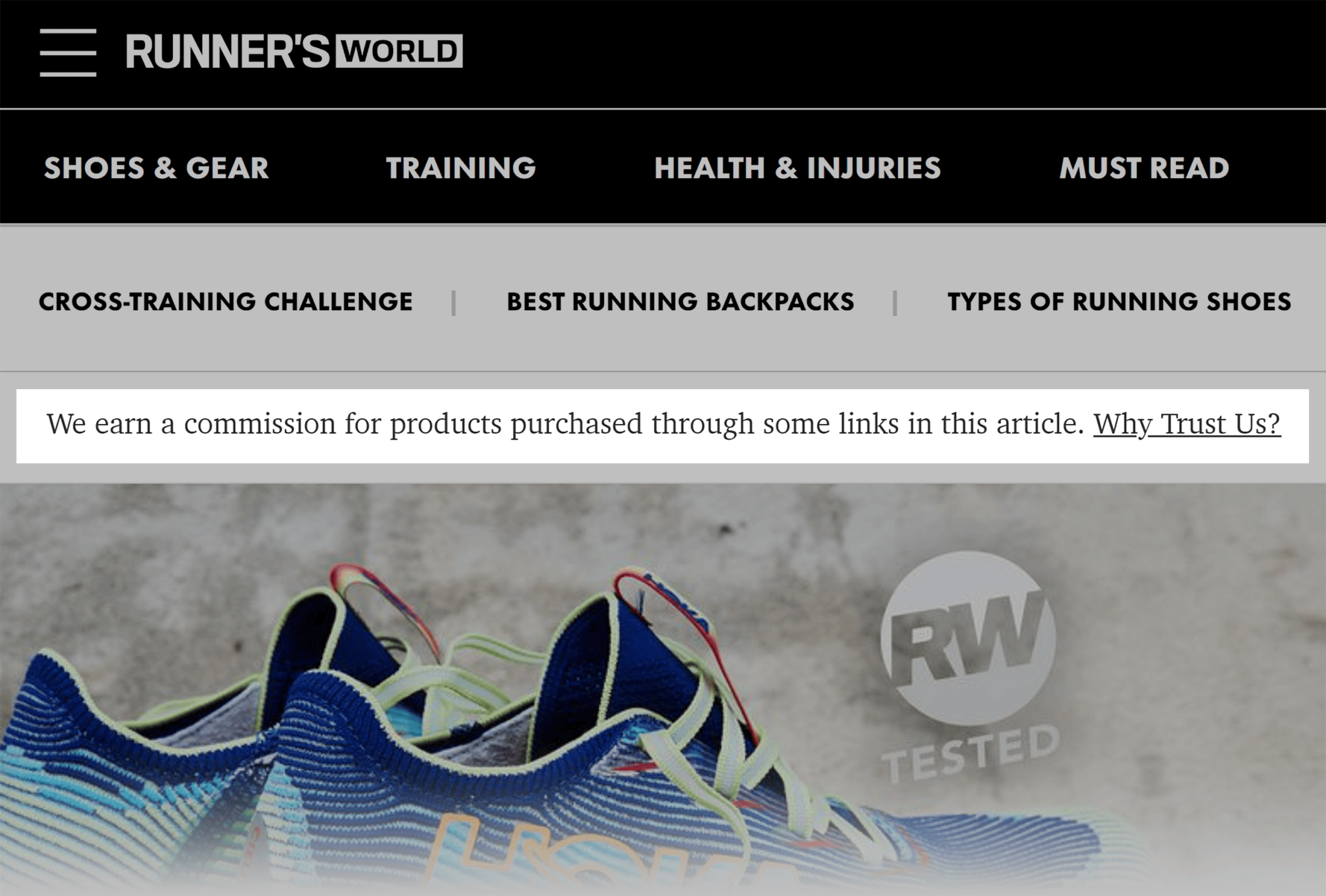
Analyze Your Competitors’ Backlinks
The next thing you need to check is the number of backlinks directed to each top-ranking page.
If a domain has a low number of backlinks (eg. fewer than 10), then there is a chance that you could overtake the site by outlinking them. But, you need to acquire quality backlinks from high authority sites that are relevant to your niche.
To check up on your competitors’ backlink profile, you can use Semrush’s Backlink Analytics Tool.
Copy and paste the top-ranking competitor’s page URL into the tool’s search bar. Then,
- go to “Referring Domains” tab
- select “Active”
- set the Authority Score to 30-100, so you only see referring domains with a high AS score
- and select “follow” to see links passing link juice as they carry the most weight

Looking at the results for the Runners World page that is ranking in the top spot, you can see that they have a total of 28 high-quality backlinks pointing to their page. This will take some beating but can be done through formulating an effective link building strategy.
Analyze Your Competitors Traffic and Traffic Value
It’s crucial to take a look at your competitors’ traffic and traffic value to determine if there’s commercial value and search interest for the topics they cover.
To do this, you can use Semrush’s Organic Research Tool. Simply copy and paste your competitor’s domain into the tool.
You’ll then get an overview of their site:

In this example, you can see that Runners World is getting over 1.4M in monthly traffic. This gives us a pretty good idea of the breadth of the search market.
Plus, you can see that their traffic is worth almost $1.1M. That means advertisers are willing to pay a lot of money for this traffic, which tells us the keywords they’re targeting have commercial value.
Analyzing these factors will give you an indication of whether or not there’s potential in this niche. But you’ll also have to look at affiliate programs and their commission structures to find out if they are programs that you’d benefit from.
Step 3: Assess Profitability
Several factors come into play when evaluating the profitability of a niche. First and foremost, it’s crucial to identify the revenue generated by sites within your niche.
One way to do this is to work out some basic forecasting. For example, let’s say an affiliate is paying a 10% commission and the average order value for their site is $50.
This means each sale is worth $5. If you can get your page to rank number one in the SERPs with a 33% click-through rate (CTR) for a keyword with a search volume of 1,000, then that equates to 333 clicks per month.
If your conversion rate for this page was 3%, then that’s ten $5 sales a month, which works out at $50 per month in revenue just from that page.
Another way of assessing profitability is to use Flippa, a platform dedicated to buying and selling domains.
After you land on the homepage, click on “Browse”.

Next, select “Websites” > “Content” > “Review”.
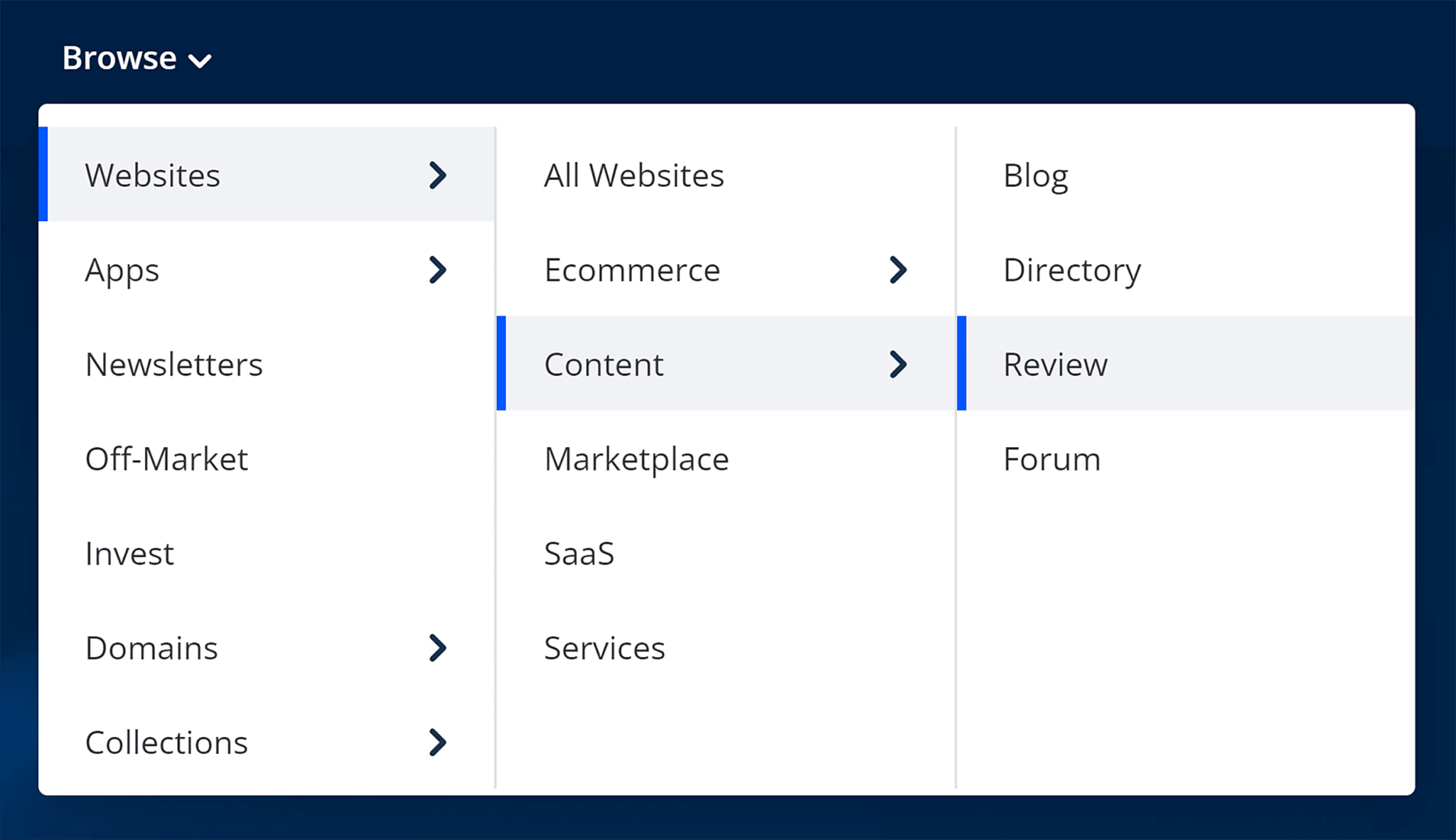
Scroll down to the “Industry” filter and select your niche. We went with “Electronics”.

Here, you can see that this site is generating $1,330 per month from affiliate sales.

While this provides a general insight into the profitability of your niche, it’s crucial to factor in the cost of content creation and site maintenance.
Next, you need to find and analyze affiliate programs and their commission structures.
Step 4: Find Affiliate Programs
Now that you’ve established that there are sites in your niche making money off of affiliate marketing, the last thing you need to do is look for relevant affiliate programs.
Once you’ve found them, you have to determine if those programs have commission structures that you’d be able to benefit from. But if you’re looking for something more niche, here are three ways to find affiliate programs.
1. Google
Perform a simple Google search.
For example, if you’re looking for affiliate programs in the running shoes niche, type in “running shoes affiliate programs” and hit search.
You’ll get a list of sites you can check out:

2. Look at your competitors’ sites
Another way to find affiliate marketing programs is by looking at your competitors’ sites.
Some sites have their disclosures placed in the footer menu — this is usually the case if they’ve only partnered with one merchant, like Amazon.
Here’s an example:

Other sites maintain a dedicated affiliate disclaimer page where they outline all the affiliate programs they have joined.

3. Analyze your competitor’s backlinks
Analyzing your competitors’ outbound links can help you identify which affiliate programs they’re signed up to. To do this, you can use Semrush’s Backlink Analytics tool.
Simply copy and paste your competitor’s domain into the tool and hit “Analyze”. For this example, let’s use Runners World (runnerworld.com).

On the “Overview” page, click on “Outbond Domains”:
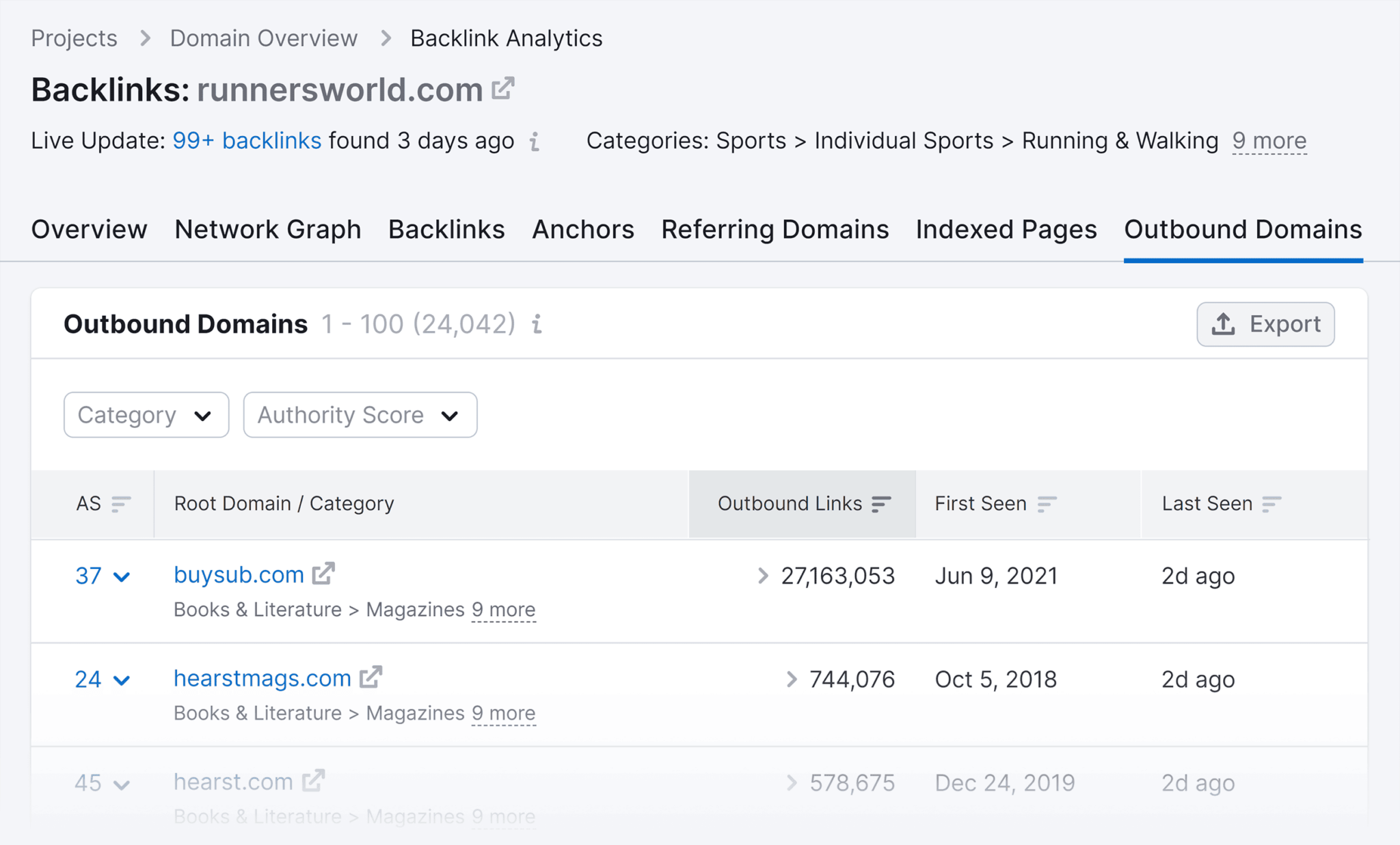
Set the “Category” filter to “Shopping” or “Internet & Telecom”. We went with “Shopping”.

You’ll now see the affiliate programs your competitor is signed up to.

In this image, you can see the competitor has signed up to a few affiliate programs, for example Amazon, Walmart, and Awin.
The next step is to research the affiliate programs you found. You’ll need to identify if they offer products or services that are related to your niche and that you would want to promote.
Additionally, you’ll need to look at their commission structures and rates to assess if the ROI is worthwhile.
After you’ve gone through all of the steps needed to qualify your niche, it’s time to find topics you can create content around.
Content Copyrights Belong to The Author. All Rights Reserved.
We're A Dallas Digital Marketing Agency That is Experts At Social Media Marketing, Website Design and Emarketing and Promotion.




